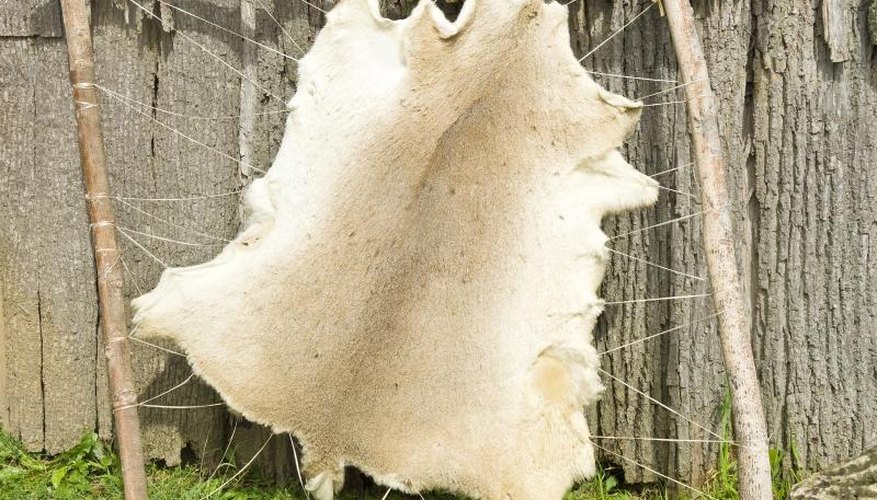
Harvesting every portion of a carcass is part of the hunter’s ethos; wasting just about anything is disrespectful to the animal and a poor use of resources. Hunters frequently discard deerskins because they do not know how to tan them or wish to avoid paying exorbitant fees for professional processing. Although you are unlikely to achieve professional-caliber results on your first attempt, it is possible for beginners to produce usable – if not perfect – hides that are suitable for making clothes or accessories.
Items you will need
Sharp knife
Dull knife
5 pounds of pickling salt
5-gallon bucket
White vinegar
Stirring stick
Towel
Tanning oil
Step 1
Skin the entire carcass using the sharp knife. Use care to avoid piercing the skin.
Step 2
Lay the hide flat on the ground or on a workbench, hair-side down. Using the dull knife, scrape the hide to remove all flesh, fat and connective tissue. Take your time while doing so to avoid nicking the skin.
Step 3
Pour a liberal coating of salt over the hide. Leave the salt on the hide until the fluids seeping from the tissues saturate the salt, which should take a few days. Dump off and discard the salt, and apply a second coating of salt. Allow it to absorb fluids for a few days. Discard the new coating of salt and rinse the hide thoroughly.
Step 4
Pour 2 gallons of water, 2 gallons of white vinegar and 4 pounds of salt into a large plastic tub and stir well. Add the hide to the solution, pushing it down until it submerges completely. Allow the hide to soak in the solution for two or three days.
Step 5
Pour out the solution, remove the hide and rinse it with fresh water. Place the hide back in the bucket and add 4 more gallons of water and 2 cups of baking soda. Let the hide soak in this solution for about one-half hour and then remove it. Rinse it off and dry it with a towel. Discard the baking soda and water mixture.
Step 6
Coat the hair-free side of the hide in a thin coating of tanning oil. Place the hide in the garbage bag and tie it shut. Leave the hide like this for about 24 hours.
Step 7
Remove the hide from the bag. Holding opposite sides of the hide, press the hair-free side of the hide against the edge of a table and move the hide from left to right. Change your hand position slightly and repeat the process. Try to work every part of the hide in this manner, including the edges. Keep working the hide as long as you can; the longer you work the hide, the softer it will feel.
Tips
- You can substitute ammonia alum for vinegar if you prefer. Soak the hide in a solution containing 4 pounds of ammonia alum and 4 gallons of water. Let the hide sit in the solution for four days before removing it, rinsing it and proceeding to work the leather.
- A sharpened soup spoon makes an excellent alternative to a dull knife.
References
Tips
- You can substitute ammonia alum for vinegar if you prefer. Soak the hide in a solution containing 4 pounds of ammonia alum and 4 gallons of water. Let the hide sit in the solution for four days before removing it, rinsing it and proceeding to work the leather.
- A sharpened soup spoon makes an excellent alternative to a dull knife.



